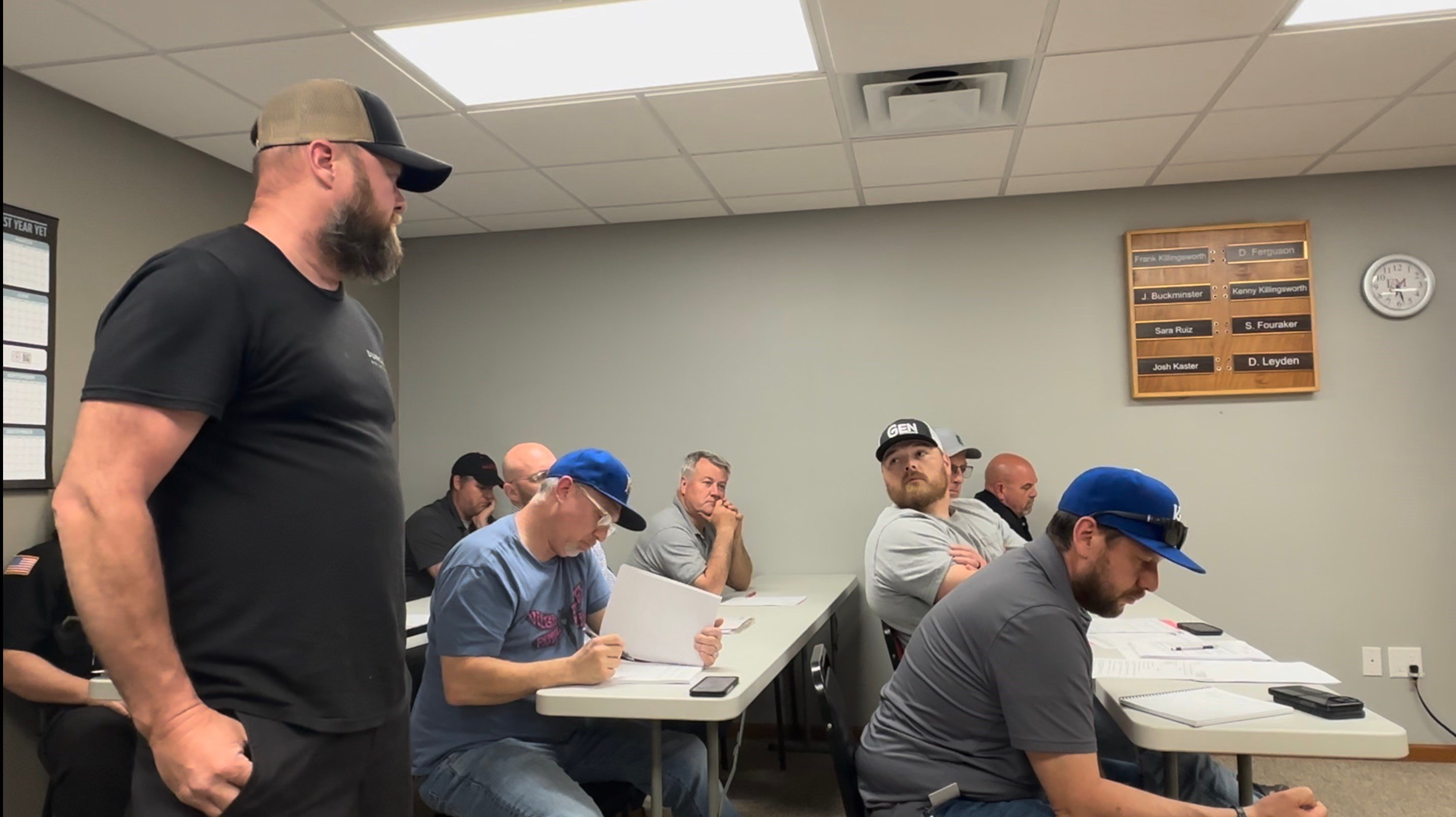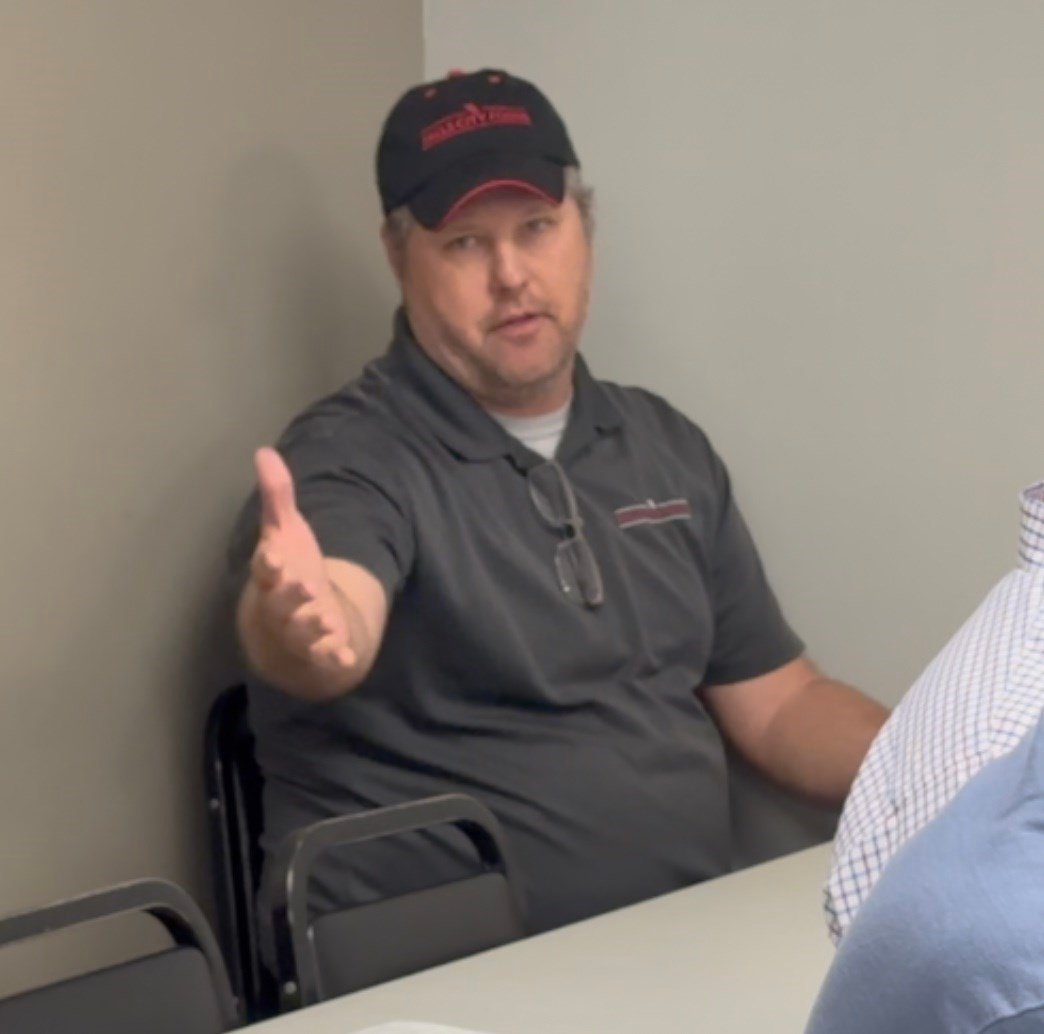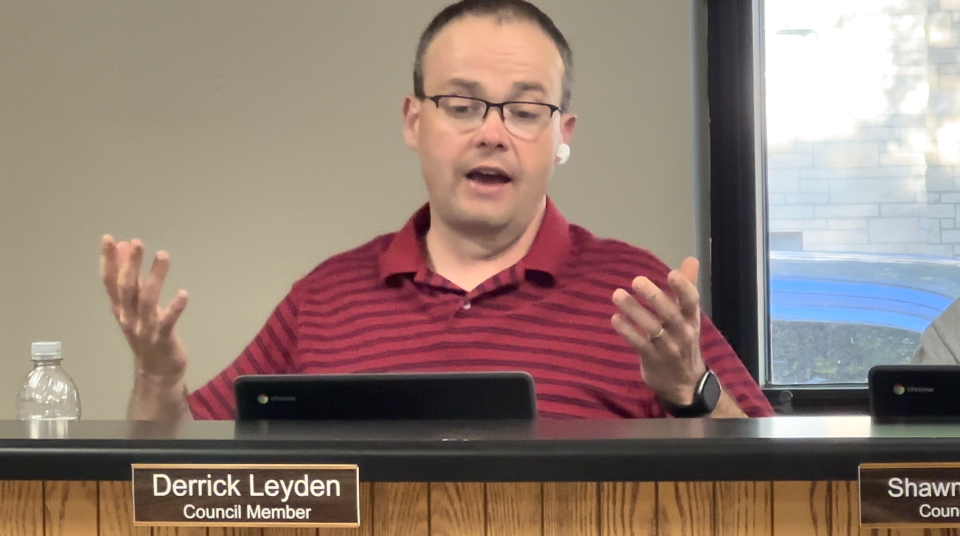Falls City council unified over electrical reliability

FALLS CITY – After reviewing the harsh realities of recent power outages, the Falls City City Council unified Monday behind a plan to upgrade its oldest electrical generation engines, strengthen the distribution system and authorize its $20 million share of a new transmission line.
City council members said they have an understanding of the circumstances the led to the resignation of the electrical line crew last month and agreed with Councilman Derrick Leyden to authorize fill-in RS Electric Utility Service of St. Joseph, Mo., to work in the city full time until the city is able to hire its own crew.
Since the line crew resigned, RS Electric has been focused on customer-driven work that can be charged to customers. The council agreed Monday that the city should be working on “hardening of its circuits” to keep its distribution system in good condition and reduce the risk of outages.

Falls City has 3,512 electric poles and none of them have been systematically inspected. Public Works Director Trevor Campbell said the city could adopt a schedule to replace a certain number of poles each year, but would not know which poles to start with.
Campbell: “We have zero data.”
After hearing the causes of power outages linked to the failure or unavailability of the city’s nine engines at its power plant, the city council made a push to get the oldest engines compliant with federal air quality standards. City Administrator Anthony Nussbaum was directed to seek expert proposals for bringing the engines up to date.
Campbell said the remaining engines appear ready to go.
Nussbaum said the city is developing maintenance and operation schedules for the power engines to improve their reliability.
Nussbaum: “Trevor is working with the power plant team to develop those schedules, even on the old engines. The run schedule is kind of the main thing that Trevor is going to try and get moving to find all those problems.”
“… an engine is not made to just sit and no do nothing.”
Campbell said the city needs a separate backup generator for the water tower. He said during an outage now the top priority is getting power to the water tower, but he would like the priorities to be the industrial and commercial zones.
Falls City Foods Manager Dusty Olberding said the pet food operation needs electricity to maintain freezers and prevent spoilage.
The company says it was processing 45,000 pounds of raw meat prior to the April 23 outage. The outage damaged electronic controls and, since power was out for 4.5 hours, employees were sent home.
On April 24, power was lost again for about 1.5 hours as workers were trying to finish the tasks interrupted the day prior.

Olberding: “Falls City Foods is concerned and would like to know what the plan is going forward to ensure we will be able to operate daily without power outages.”
He said the company wants assurances that Falls City will maintain its electrical grid to reduce the risk of outages.
Nussbaum says the city successfully generated it owns electric power for 18 hours on April 22 before transitioning back to OPPD. The city returned to self-generation on April 23, but an overheated engine tripped a breaker and caused a citywide outage.
OPPD loaned equipment for the city to get an engine running for self-generation on April 24, but the repaired engine also failed, causing another full outage until the city switched back to OPPD.
Nussbaum said the path forward includes “a more robust” engine exercise schedule to detect future failures during controlled conditions.
Nussbaum said a secondary transmission feed remains a long-term goal, but the city also needs self-generation reliability.
He said continued investment in equipment and communication practices are critical to building confidence and resilience in the Falls City electric system.
Councilman Leyden said electrical outages are a concern for business and industry.
He said there are also concerns that there is misalignment with the city administration’s vision to remedy problems.

Leyden: “I am asking my fellow council members to strongly consider approving options presented for onsite line crews and ongoing maintenance contracts. I know this is costly to our utility budget, but I would like you to consider the cost to the city as a whole (both public and private), if career-creating industries are raising these concerns.
“In addition, if there is routine maintenance that needs to be completed, I believe it would be a more cost-effective approach to have a third-party contractor completing the tasks proactively, rather than responding to a failure which causes businesses to lose production time and damage property.”
“I am not a fan of the higher costs that a temporary solution requires, but I am trying to take a pragmatic approach to our situation.”
Nussbaum announced a matching fund plan for the Energy Forward Transmission Project, which is now in engineering phase. The project is expected to cost $30 to $40 million, but the city has secured a $15 million grant. A bond issue is proposed for an additional $21 million.
Nussbaum: “It is important to emphasize that funding this project exclusively through existing customer rates would place an undue burden on our current customers.”
He said the Southwest Power Pool should explore options for paying off the debt, including transmission credits, which could reduce construction costs to the city’s rate payers.
The bond proposal is:
$7.3 million in 2026
$7.3 million in 2027
$6.3 million in 2028

